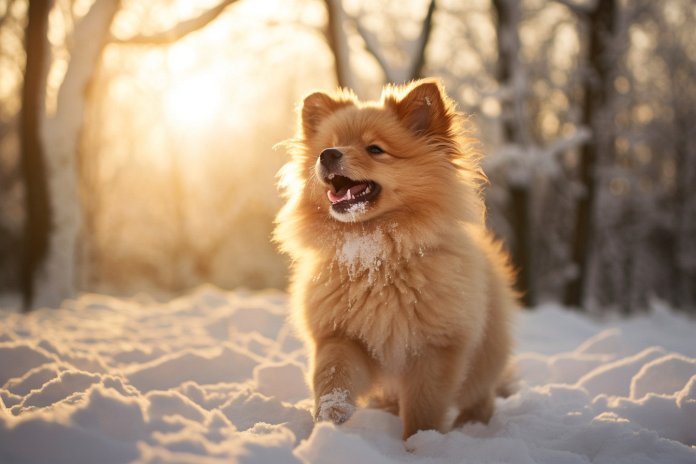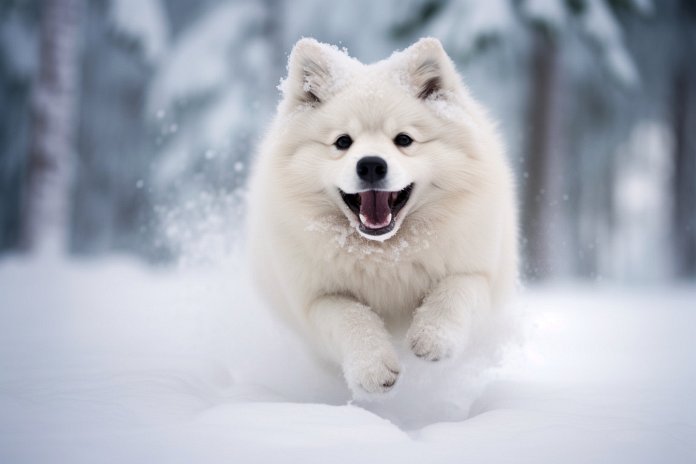
Currently, the weather across the country is unpredictable, switching between spring and winter. This not only affects our health but also disrupts our dog’s routines. We may hesitate to go outside due to the unpleasant weather, and we also worry about our dogs getting too cold. While dogs have fur to protect them in colder temperatures, they can still feel cold, especially with a low wind chill. However, there are ways to keep them warm and comfortable during this winter and future winters.
Signs Your Dog is Feeling the Wind Chill
There is no specific temperature that determines whether it is too cold to go outside. Wind chill makes it feel colder than what the thermometer reads. For instance, if the thermometer shows 35 degrees, with 30 MPH winds, it actually feels like 5 degrees. This is too cold for both us and our dogs.
All dogs handle the cold differently, depending on their breed, fur, body size, fat content, and other factors. However, there are common signs that indicate when a dog is too cold or it is too cold for them to go outside. Many of these symptoms are similar to what we experience when we are cold.
One sign is shivering or shaking, which is the body’s way of generating heat. If your dog is shaking, it’s time to go inside because they are feeling the wind chill.
Hypothermia can also affect dogs in low wind chills. They may appear sleepier than usual due to decreased blood flow and may exhibit troubled breathing. Dogs will try to rest to heal their bodies, as cold can slow down their muscles. So, the sleepier your dog is, the lower the wind chill is likely to be.
You can also determine if your dog feels the wind chill by checking their ears. When a dog feels a low wind chill, their ears or toes will be very cold. This is because their body is prioritizing blood flow to keep their central body warm, resulting in less blood reaching their extremities. If their ears are freezing to the touch, it’s time to go inside and warm them up.
Body Language
If your dog is getting too cold from the wind chill, they may exhibit signs such as whining, shaking, cowering, panting, weakness, freezing, raspy panting, dropped ears, whimpering, tail tucking, whale eye, sleepiness, and other indicators.
Other Signs
Additional signs that your dog is too cold include trying to hide, curling in on themselves, sleepiness, cold ears or feet, avoiding touching cold pavement, and raspy or labored breathing.
The History Behind Cold Temperatures and Puppies
Some dog breeds have evolved to handle the cold better than others. Breeds like Huskies, Samoyeds, and Bernese Mountain Dogs are native to cold regions like Alaska and the Siberian tundras. Their coats have become thicker, and they have more fat to stay warm in extreme cold.
These breeds even have multiple layers of fur. While they are more tolerant of the cold, they still have their limits, so caution is necessary, even for dogs that prefer colder temperatures.
The Science Behind Wind Chill and Dogs
Wind chill is what it actually feels like on your skin when the wind is factored in. The wind strips away the warm air layer above your skin, causing you to lose heat. The stronger the wind, the more heat you lose, and the lower the wind chill temperature, the higher the risk of frostbite or hypothermia.
The same applies to dogs. Lower wind chills are particularly dangerous for young and senior dogs, sick or underweight dogs, and those that have been outside for too long or are wet. If any of these factors apply to your dog, it is important to bring them inside to ensure their happiness and health.
“Protect your pup from the bitter wind chill and keep them warm this winter!”

Tips & Things to Know
1️⃣ Pay attention to your dog’s behavior and body language to determine if they are feeling the wind chill. Signs such as shivering, lethargy, and cold ears or toes can indicate that your dog is too cold and needs to go inside.
2️⃣ Understand that different dog breeds have different tolerances for cold weather. Breeds that are native to colder climates may be better equipped to handle low wind chills due to their thicker coats and heavier fat stores. However, even these breeds have their limits, so it’s important to monitor your dog for signs of discomfort.
3️⃣ Be aware of the dangers of low wind chills, especially for young puppies, senior dogs, sick or underweight dogs, and dogs that have been outside for extended periods or are already wet. These dogs are more susceptible to frostbite and hypothermia, so it’s crucial to bring them inside and provide warmth and shelter.
Frequently Asked Questions, Answered ✅
1. How does wind chill affect dogs?
– Wind chill makes it colder than the actual temperature and can cause dogs to feel too cold to go outside.
2. What are the signs that a dog is feeling the wind chill?
– Signs include shivering or shaking, sleepiness, cold ears or feet, and exhibiting certain body language such as whining or tail tucking.
3. How can you determine if your dog is feeling the wind chill?
– You can determine if your dog’s body temperature is too low by feeling their ears or toes, which will be very cold to the touch.
4. Which breeds are better equipped to handle the cold?
– Breeds like Huskies, Samoyeds, and Bernese Mountain Dogs have evolved to have thicker coats and heavier fat storage to withstand cold temperatures.
5. Why is wind chill dangerous for dogs?
– Lower wind chills can lead to frostbite or hypothermia, especially for young or senior dogs, sick or underweight dogs, and dogs that have been outside for too long or are already wet.